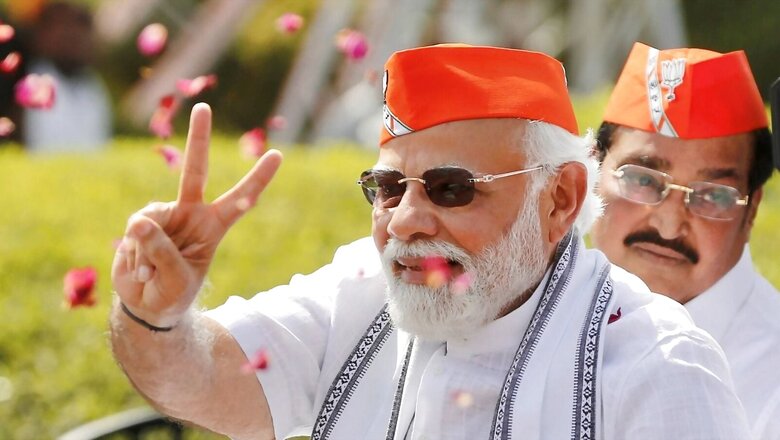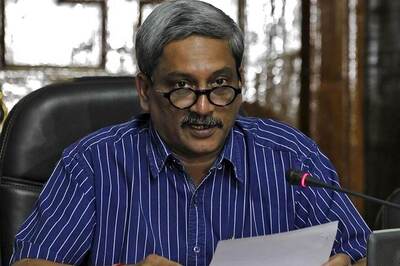
views
West Bengal’s former Chief Minister Jyoti Basu was no ordinary leader. Typical to communists, he was a 24X7 politician. Has been a legislator since 1946. Just as Narendra Modi was a popular choice since his Gujarat days; Basu was among the most popular leaders, cutting across party lines, nationally.
As Chief Minister (1977-2000), he contested five elections. All from Satgachhia in backward South 24-Parganas district. Basu used to visit the constituency only during elections. The area remained neglected. The party cited the CM’s wider responsibilities. It was a different matter, that West Bengal lost out in the development race during his tenure.
Compare this with Prime Minister Modi’s attention to Varanasi, Uttar Pradesh Chief Minister Yogi Adityanath’s focus on Gorakhpur, highway king Nitin Gadkari’s care to Nagpur and you see a marked difference in attitude.
Such attention is not similar to feudal wastage of public money by building a costly airport, at the family village of the Chief Minister or taking the railway flyover to the minister’s doorstep. India has seen enough of that. A minister ordered a coal boss to distribute cash to squatters in public land that doesn’t belong to the coal company.
Accountability in Politics
The broad difference that Narendra Modi’s BJP brought in Indian politics is the introduction of accountability in delivery. This is not similar to giving Rs 2 a kg bag of rice, which NT Rama Rao started in Andhra Pradesh either. Yes, they do give rice, but that’s a stop-gap arrangement.
Modi’s thought process is similar to the Chinese. He looks at transformational change and aims to make even the smallest of small constituencies a stakeholder in it.
Also Read: Mandate 2022 Shows Yogi is King in the North and AAP is Harbinger of Hope
Think of the activities taking place in Varanasi. Kashi Vishwanath Corridor is not an isolated project. Add Jal Marg, PM Gati Shakti, an international airport in Kushinagar, Ayodhya and the Ramayana Tourism circuit extending up to Janakpur in Nepal, etc., and the design is clear.
Varanasi will regain its glory as a river-based trading hub and will help attract more tourists to Uttar Pradesh. The shift lies in Modi’s denial to sell the narrow, dirty image of Kashi. The tourists will be introduced to a new India that is not afraid to don a modern image while remaining rooted in its past. China is full of such examples.
The Modi-Yogi Enterprise
It is important to note how the agendas of Yogi Adityanath and that of the Prime Minister merge effortlessly. The Prime Minister is focused on ending the economic backwardness of the east, ending import dependence on fertiliser, and giving the country wider energy choices. Yogi wanted the development of his home turf eastern UP. Together, Modi and Yogi delivered the Saryu Nahar canal project and the Gorakhpur fertilizer plant. Add Purvanchal expressway connecting; fertilizer plants in Barauni (Vihar), Sindri (Jharkhand) and you see the agriculture economy in the entire hinterland is getting a leg-up. This is no discretionary spending like Saifai airport.
Congress’ Ineptitude
Compare this with Congress’ approach. Rajasthan is firing salvos at Chhattisgarh for not giving clearance to its captive coal mines. If Rahul Gandhi cannot ensure a concerted approach between their two chief ministers, how can he convince the masses about presenting efficient governance like that delivered by the BJP?
CEO-style Governance
Former Chief Minister of Andhra Pradesh, Chandrababu Naidu, introduced the concept of CEO-style government. This has now become popular. Naveen Patnaik in Odisha is not a man of politics. He doesn’t trust a cadre network like the CPI(M) or BJP-RSS either. He is ruling Odisha for 22 years, ignoring competition from BJP, based on CEO-style operation.
Having said that, Modi’s BJP took the model to a level that was unthinkable in the past. Here the Prime Minister is a hands-on super boss, who doesn’t stop with the reports of the divisional (read cabinet) or subsidiary (read State) heads.
Like top FMCG managers who quietly visit roadside Kirana stores to keep track of the latest sales trends; Modi has his channels to check the ground mood and delivery.
His ‘Maan Ki Baat’ is not a one-way communication from the ivory towers of power. It is an efficient tool for merging microaspiration with national needs. Think of the way this government took civilian awards to the masses and you will know the difference in delivery.
Aspirational Districts: A Unique Idea
On a bigger scale, the idea of aspirational districts is unique. The government is identifying pockets that are falling behind and targeting entire resources from political, social, administrative and finance to ensure transformation in a time-barred manner.
The planning is so sound that even the smallest tribal communities, who prefer to remain in isolation, do not miss the radar. That doesn’t mean that BJP is the only party with a difference or they do not have their weaknesses. AAP did bring noticeable change in the education sector in Delhi. They must repeat this success story in Punjab.
Mamata Banerjee started very well with infrastructure building in West Bengal in 2011. Her idea of holding development meetings in districts was good.
However, such strong development intent lost tempo sometime in 2017, when took to cheap populism, strongarm tactics and other ills to win votes and the party cadres took control of every decision making. She did win in 2021. But, her first election defeat in decades, in Nandigram, brought the chink in the armour in the open.
On a broader scale, however, there is a similarity between the Trinamool Congress, AAP and BJP. Each is led by champions in electoral politics. Each leader had his or her share of failures. Modi failed to script a win for BJP in Bihar in 2015 and West Bengal in 2021. But each time they were up against the wall, they bounced back with greater vigour. Their ability to win votes is their biggest asset.
The central leadership of parties like Congress and CPI(M) are deprived of such qualities. CPI(M) politburo was long dominated by theoreticians who probably couldn’t win even a student election. But they decide the fate of as successful vote-catchers as Jyoti Basu or VS Achuthanandan.
The situation in Congress is pathetic. They can neither think of dumping the Nehru-Gandhi dynasty that lost its popular connect after the demise of Rajiv Gandhi nor would the clan allow more able hands to run it.
When you lose appeal to voters, you live on compromises to stick to power. That’s exactly what Congress had been doing since Sonia Gandhi took over and the party started lending its signboard to smaller parties working for cross-purposes to stitch together an inefficient joint venture called UPA. The liability goes to the account of Congress.
Changing the Rules of the Game
BJP learnt its lessons from NDA-1. They expanded the party. The Modi-Amit Shah duo worked on a plan. They wanted to change the rules of the game from the root of it. So Jharkhand had a non-tribal Chief Minister, a Brahmin for Maharashtra and a non-Jat in Haryana.
Yes, they also suffered the backlash. They are out of power from both Maharashtra and Jharkhand. But, they are not finished. They are in the striking zone in both states. Jats regrouped to teach them a lesson in the UP election but failed. The experiment succeeded.
In the end, it is all about able leadership.
Pratim Ranjan Bose is a Columnist, Researcher and Political Analyst. He tweets at @PratimBose. The views expressed in this article are those of the author and do not represent the stand of this publication.
Read all the Latest Opinion News and Breaking News here


















Comments
0 comment